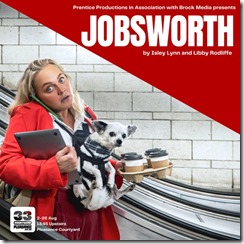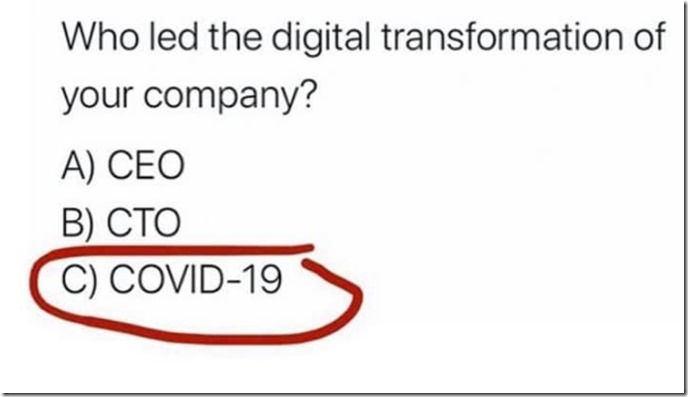Headlines are rife with the “The Great Return” trumpet call to reverse so much of the progress made in dynamic working since the catalytic cataclysm of COVID. The press releases trot out the vague and buzzword-laden rationalizations centered on “culture” and “relationships”. While these qualities are important factors in a high-performing team, they are also often scapegoats to mask disfunction in the company leadership. Sequestering people exhausted from a tedious commute on uncomfortable chairs in fluorescent-lit cavernous rooms with battery-farm aesthetics burying their heads in their computer screens most of the day is not going to contribute to any of those aspects. The companies who claim to care about such aspects often don’t invest in tools, skills, time, and resources to truly foster them (beyond the odd pizza Friday and day out of the office).
Beware the real reasons behind the wizard’s curtain as to why management is frog-marching people back to the office…
- Inability to Manage Outcomes – The primary reason that management balks at supporting remote working is that they don’t know how to manage outcomes. As a result, they instead just manage activity in the desperate hope there is some correlation between activity and results.
- Management Facade – In a smoothly running organization with effective empowerment and delegation, “management” in many cases is not a full-time job. As a result, those managers want to be judged on activity to keep the higher-ups from realizing that the outcomes they directly affect are so limited. As a result, back-to-the-office managers want to create the pretense of their workload. Traditionally, this has taken the form of time-wasting meetings and dust-gathering reporting processes. A presenteeism fiat means they can appear “busy” by sitting in their private offices (but still doing not much).
- Weak Digital Capability – Many managers and executives who have worked their way up the corporate ladder are still in the Gen X and even Boomer generation whose digital skills are not their strongest suit (some barely have keyboard skills). Remote working is frustrating for them as they go from being the smartest in the physical room to the most inept on the virtual room (undermining their authority). And, despite being two decades into the Digital Age, many companies remain woefully underinvested in reasonably current IT technology to increase efficiency preferring to extract productivity out of the hide of the workers instead the capex budget for better tools.
- Dependency on Social Manipulation – For management that rose to their positions through a range of social manipulation (from the snake-oil of NLP to emotional bullying), these antics work best face-to-face (especially where the is no digital recording or written trail).
- Sunk-Cost Fallacy of Bricks and Mortar – Say the bean-counters, “We’re paying for this damn office so we are going to use it.”
- Confirmation Bias – A small portion of people do actually prefer to come into the office every day for a range of reasons (live nearby so low commute costs, inhospitable home environment, preconceived notions about the status of being in an office, favoring the office ritual). These examples are cherry-picked to argue that all employees are happy to be in the office more.
- Strategy Revolving Door – Managers are often challenged by their stakeholders “what are you going to do to improve things?” and the weak ones grasp at highly visible (even if ineffectual) changes to appear proactive (see “Amazonian Raindancers”). “I know what the problem is…remote work!…Bring everyone back to the office!” Strong echoes of the yo-yo strategy shifts between centralization and decentralization that earned McKinsey billions where the new guy in a couple of years will proclaim his revolutionary strategy for the business…more remote working.
- Inflexibility – Flexible work location is just one aspect of “flexible working” which also includes flexible times, flexible roles and flexibility commercial arrangements (ie. how people get paid). Flexibility where the work gets done often prompts questions about when, how and under what terms it gets done as well. For example, remote and digital work very quickly becomes asynchronous which induces time flexibility. All this flexibility, which is the cornerstone of certainly resilience and often effectiveness, can be very difficult to adapt to for managers who cut their teeth on strict paint-by-number management nostrums designed for white-collar factories instilled from their vaunted MBAs.
- Oversight Skirting Reduction in Force – More than a few three line whips to return to the office have been thinly veiled maneuvers to avoid messy lay-offs by putting the screws to employees enough to get them to depart on their own without the onerous process and the redundancy pay.
- Incarcerated Boredom-Driven Discretionary Effort – If a person in the office gets their key work done, then they often will get on an do extra work to fill the time of being stuck in the office, but working remotely, once they get their required work done, they will go enjoy themselves with all of the personal distractions available (this one is really a corollary of #1).
Admittedly, the above list is enumerated in a unapologetically cynical tone about management primarily because I have simply heard too many similarly cynical aspersion cast on the workforce about what’s wrong with remote working (eg. “lazy millennials!”). If there is any “shirk from home” going on, then it is simply because the company leaders don’t know the first thing about performance management.
In the vast majority of the cases, the optimal approach is a hybrid between remote and in-office. In fact, most of business is about balancing such trade-offs (eg. short-term versus long-term, structure versus flexibility, centralization versus decentralisation). Setting the dial depends on the context of the problem being solved and how the solution operates best. Businesses should definitely be constantly examining the nature of their business what mix of remote and in-office work is optimal, but it should be done with a focus on business problems and not attachment to legacy weaknesses and dated misconceptions.







